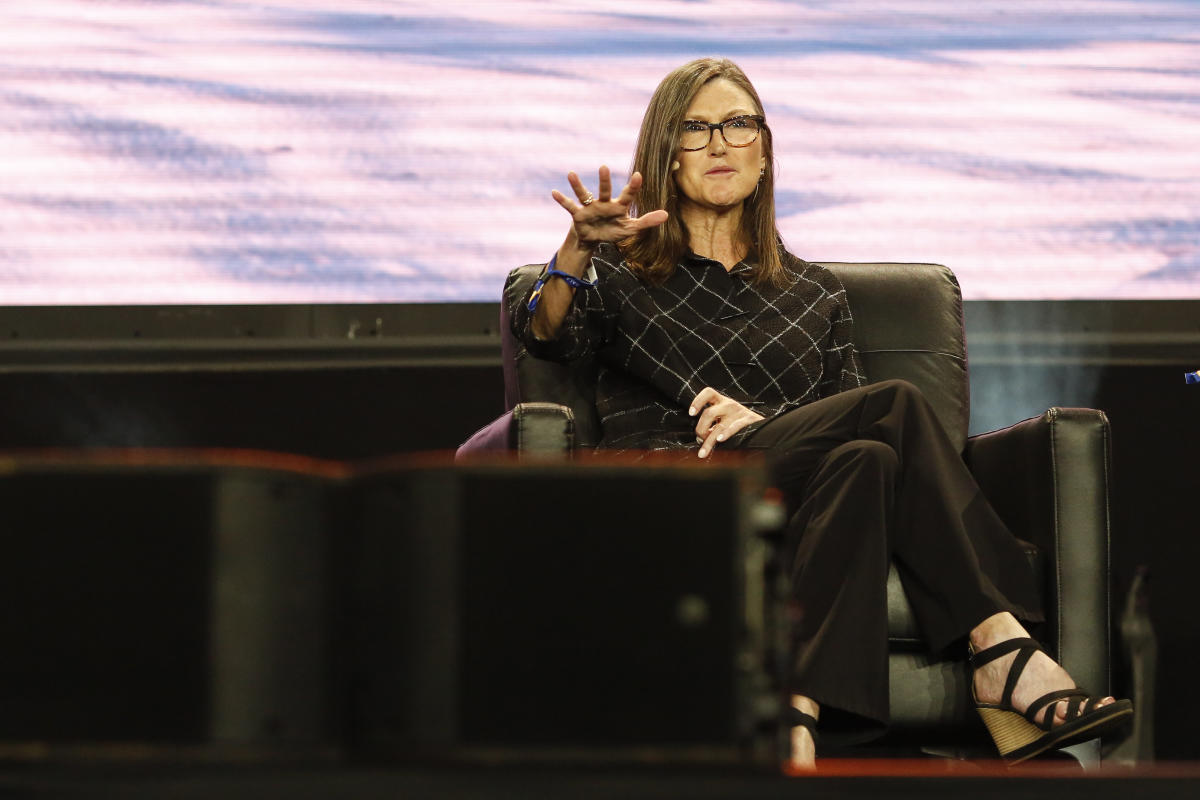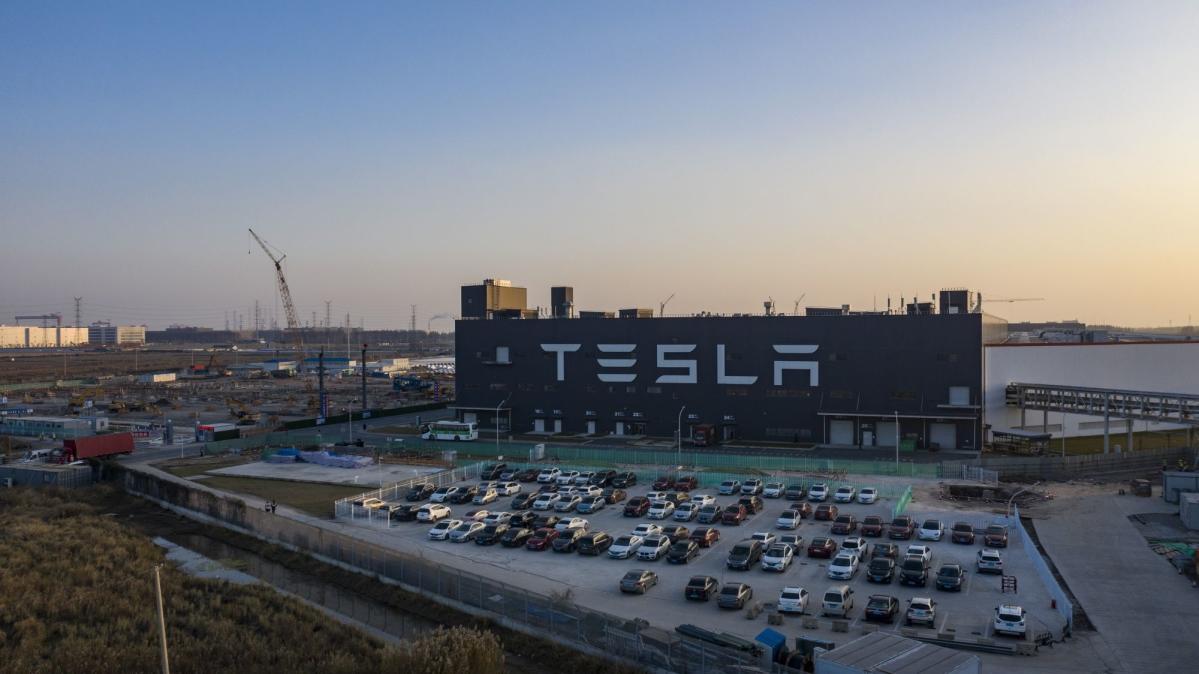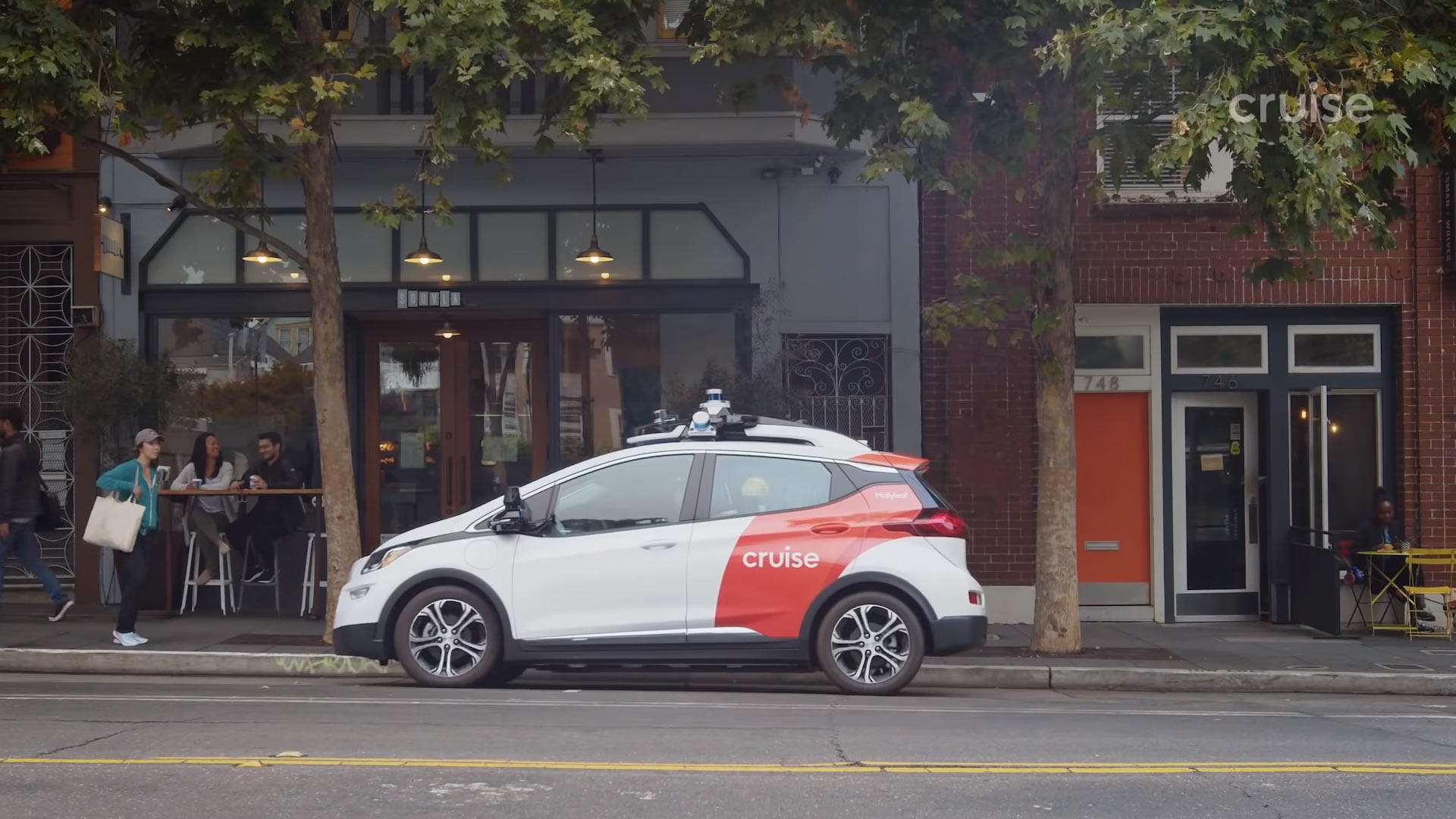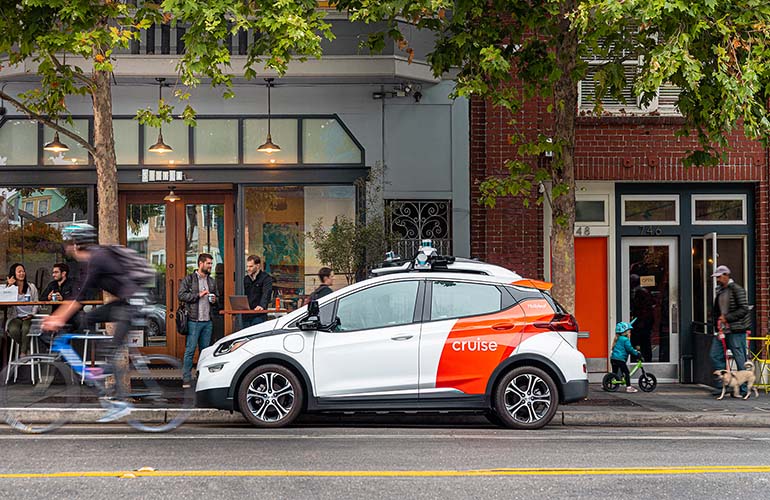Have they ever, ever, invested in legacy ICE? What possible justification could they have?
Welcome to Tesla Motors Club
Discuss Tesla's Model S, Model 3, Model X, Model Y, Cybertruck, Roadster and More.
Register
Install the app
How to install the app on iOS
You can install our site as a web app on your iOS device by utilizing the Add to Home Screen feature in Safari. Please see this thread for more details on this.
Note: This feature may not be available in some browsers.
-
Want to remove ads? Register an account and login to see fewer ads, and become a Supporting Member to remove almost all ads.
You are using an out of date browser. It may not display this or other websites correctly.
You should upgrade or use an alternative browser.
You should upgrade or use an alternative browser.
Tesla, TSLA & the Investment World: the Perpetual Investors' Roundtable
- Thread starter AudubonB
- Start date
JRP3
Hyperactive Member
GM is leading, obviously.Have they ever, ever, invested in legacy ICE? What possible justification could they have?
I have no words…Have they ever, ever, invested in legacy ICE? What possible justification could they have?
Cathie Wood 'keeping open mind' on investing in GM as carmaker scales EV plans
General Motors has been revving up its electric vehicle business. And Cathie Wood is taking notice.
“I'm fascinated by how Mary Barra is really turning that ship around and very focused on cruise automation,” Wood said in a sit-down conversation with Yahoo Finance’s Julie Hyman.
larmor
Active Member
"Con man admits to libel about tesla and faces monetary punishment. Curiously, SEC remains silent"Faulty brake liar. Why not reported via mainstream media. forget it.

Tesla Faulty Brakes Accuser Admits Lying About Incident: What's Next? - Tesla (NASDAQ:TSLA)
Last year, an owner of a Tesla Inc (NASDAQ: TSLA) vehicle in China protested at an auto show saying their Tesla's brakes were faulty.www.benzinga.com
Words have meaning and i'm guessing that the original headline used a human or AI engine to choose words that would maximize click through.
Congo Line
(not the dance)
So glad I starting selling off ARKK weeks ago. She has really lost her judgementI have no words…

Cathie Wood 'keeping open mind' on investing in GM as carmaker scales EV plans
General Motors has been revving up its electric vehicle business. And Cathie Wood is taking notice.finance.yahoo.com
“I'm fascinated by how Mary Barra is really turning that ship around and very focused on cruise automation,” Wood said in a sit-down conversation with Yahoo Finance’s Julie Hyman.
Artful Dodger
"Neko no me"
This thought is mainly driven from that fact that both Berlin/Austin already had a lot of operating costs associated with them in Q1. Things like utilities, paying employees at both factories (which easily top 5,000 combined at this point), etc....
Those operating costs were impacting Q1, but Berlin only delivered a handful of vehicles and Austin delivered none. So there was no revenue coming in to cover those operating costs. Which disproportionally hit operating margin.
I don't think that's the way GAAP accounting works for labor during capital construction. I think the hourly cost of labor is rolled into Property, plant, and equipment: (PP&E)
1.2 Accounting for capital projects | Price Waterhouse Coopers (U.S.)
"Property, plant, and equipment (PP&E) is reported at its historical cost, which is the amount of cash, or its equivalent, paid to acquire an asset, and is commonly adjusted subsequently for amortization, depreciation, and/or impairment. The guidance for the costs to be capitalized when acquiring PP&E can be found in ASC 360-10."
"The historical cost of acquiring an asset includes the costs necessarily incurred to bring it to the condition and location necessary for its intended use.
"Capital costs may include labor, materials and supplies, transportation, engineering services, certain overhead costs, insurance, employee benefits, taxes, and interest. Similarly, an expenditure that adds to the productive capacity or improves the efficiency of an existing asset can be considered a capital item. Costs incurred during construction that are directly attributable to placing it into service should be capitalized. Costs that are not necessary in readying an asset for use should be recognized as an expense as incurred.
The accounting treatment above is why training costs for production employees is a capital cost. I think that, at least for Texas, with Model Y deliveries not yet begun to the public, labor cost for building these early vehicles may still be considered a capital cost, in that it is "an expenditure that adds to the productive capacity or improves the efficiency of an existing asset can be considered a capital item"
Paging @st_lopes @The Accountant : Did you see anything related to this in the 2022Q1 10-Q ?
TL;dr Labor during the Austin/Berlin production ramp may not be 100% expensed to COGS; some portion may be accounted for as a capital cost if that labor is training- / capacity- / efficiency- related (which I believe it is).
Yep, I'll be exiting my ARK positions. I own all of them and very soon none. Ugh, what a shame. I'm all to familiar with Cruise and their AI from my time in tech.
Cathie Wood 'keeping open mind' on investing in GM as carmaker scales EV plans
General Motors has been revving up its electric vehicle business. And Cathie Wood is taking notice.finance.yahoo.com
“I'm fascinated by how Mary Barra is really turning that ship around and very focused on cruise automation,” Wood said in a sit-down conversation with Yahoo Finance’s Julie Hyman.
The only thing GM is turning is my stomach.
Well, it's ARKQ, maybe they subconsciously believe ARK is going under soon?Have they ever, ever, invested in legacy ICE? What possible justification could they have?
Big Dog
Active Member
I don't think that's the way GAAP accounting works for labor during capital construction. I think the hourly cost of labor is rolled into Property, plant, and equipment: (PP&E)
1.2 Accounting for capital projects | Price Waterhouse Coopers (U.S.)"Property, plant, and equipment (PP&E) is reported at its historical cost, which is the amount of cash, or its equivalent, paid to acquire an asset, and is commonly adjusted subsequently for amortization, depreciation, and/or impairment. The guidance for the costs to be capitalized when acquiring PP&E can be found in ASC 360-10.""The historical cost of acquiring an asset includes the costs necessarily incurred to bring it to the condition and location necessary for its intended use."Capital costs may include labor, materials and supplies, transportation, engineering services, certain overhead costs, insurance, employee benefits, taxes, and interest. Similarly, an expenditure that adds to the productive capacity or improves the efficiency of an existing asset can be considered a capital item. Costs incurred during construction that are directly attributable to placing it into service should be capitalized. Costs that are not necessary in readying an asset for use should be recognized as an expense as incurred.
The accounting treatment above is why training costs for production employees is a capital cost. I think that, at least for Texas, with Model Y deliveries not yet begun to the public, labor cost for building these early vehicles may still be considered a capital cost, in that it is "an expenditure that adds to the productive capacity or improves the efficiency of an existing asset can be considered a capital item"
Paging @st_lopes @The Accountant : Did you see anything related to this in the 2022Q1 10-Q ?
TL;dr Labor during the Austin/Berlin production ramp may not be 100% expensed to COGS; some portion may be accounted for as a capital cost if that labor is training- / capacity- / efficiency- related (which I believe it is).
You are correct. Until Austin goes live, the vast majority of costs are capitalized, not expensed. They could even allocate a portion of overhead, i.e., Elon's and others' time to the project.
The Accountant
Active Member
I don't think that's the way GAAP accounting works for labor during capital construction. I think the hourly cost of labor is rolled into Property, plant, and equipment: (PP&E)
1.2 Accounting for capital projects | Price Waterhouse Coopers (U.S.)"Property, plant, and equipment (PP&E) is reported at its historical cost, which is the amount of cash, or its equivalent, paid to acquire an asset, and is commonly adjusted subsequently for amortization, depreciation, and/or impairment. The guidance for the costs to be capitalized when acquiring PP&E can be found in ASC 360-10.""The historical cost of acquiring an asset includes the costs necessarily incurred to bring it to the condition and location necessary for its intended use."Capital costs may include labor, materials and supplies, transportation, engineering services, certain overhead costs, insurance, employee benefits, taxes, and interest. Similarly, an expenditure that adds to the productive capacity or improves the efficiency of an existing asset can be considered a capital item. Costs incurred during construction that are directly attributable to placing it into service should be capitalized. Costs that are not necessary in readying an asset for use should be recognized as an expense as incurred.
The accounting treatment above is why training costs for production employees is a capital cost. I think that, at least for Texas, with Model Y deliveries not yet begun to the public, labor cost for building these early vehicles may still be considered a capital cost, in that it is "an expenditure that adds to the productive capacity or improves the efficiency of an existing asset can be considered a capital item"
Paging @st_lopes @The Accountant : Did you see anything related to this in the 2022Q1 10-Q ?
TL;dr Labor during the Austin/Berlin production ramp may not be 100% expensed to COGS; some portion may be accounted for as a capital cost if that labor is training- / capacity- / efficiency- related (which I believe it is).
Much of the costs to construct the factory and to validate equipment are capitalized to Property Plant and Equipment but there are significant costs in the pre-production phase that Tesla expenses to R&D. See this from the 10Q:
In addition, there are costs that go straight to COGS and cannot be capitalized to PP&E nor Inventory. One example is employee training.
The labor costs of new hires who are training and not validating equipment go straight to COGS in my experience.
I have been accounting for these direct charges to the income statement in my forecasts.
So there is some validity to @StarFoxisDown! 's point; difficult to quantify though.
Last edited:
henchman24
Active Member
The Shanghai news either way really isn’t great. Even running, if it is only at a minimal rate through May, Q2 is likely going to be rough. Most will give credit for a one off, but the rabbit out of the hat is unlikely now. Full opening and run rate is likely still a ways off.
Shorter term, it’ll likely be used tomorrow to offset good production numbers or exemplify poor numbers. But the macro matters more. Fed members talking and CPI data Wednesday will ultimately control the next week. There could be more or let out of things are bad, but that news won’t hold back a major rally if one kicks off.
Shorter term, it’ll likely be used tomorrow to offset good production numbers or exemplify poor numbers. But the macro matters more. Fed members talking and CPI data Wednesday will ultimately control the next week. There could be more or let out of things are bad, but that news won’t hold back a major rally if one kicks off.

Tesla’s China Plant Facing More Disruptions From Covid Lockdown
(Bloomberg) -- Tesla Inc.’s China factory is experiencing some disruptions and may see more curbs to production this week as Shanghai’s long-running Covid-19 lockdown continues to impact supply chains. Most Read from BloombergSony PlayStation Staff Fume Over CEO’s Abortion CommentsElon Musk Sows...
The Reuters news makes the bear raid more obvious
Artful Dodger
"Neko no me"
Tesla (TSLA) Halts Car Production at Shanghai Factory on Supply Issues: Reuters | Bloomberg News
- Original headline May 9, 2022, 8:03 PM MDT
Again, we witness REUTERS making *sugar* up. Bought'n'paid'for newzies, jus' bidness as usual...
Cheers!
- Original headline May 9, 2022, 8:03 PM MDT
"Tesla Says Shanghai Plant Still Making Cars; No Halt Notice"
- Updated headline May 9, 2022, 9:12 PM MDT- U.S. automaker received no notice of Shanghai production halt
- Plant shut for three weeks in April due to Covid lockdowns
"Tesla Inc. hasn’t halted output at its Shanghai factory, though it is experiencing some disruption to logistics amid the city’s long-running Covid-19 lockdown, a spokesperson for the U.S. carmaker said Tuesday.
"Reuters reported earlier that output had halted, prompting Tesla to issue a statement saying it had received no notice of any Shanghai plant cessation and pointing out that some vehicles are still being made."
Again, we witness REUTERS making *sugar* up. Bought'n'paid'for newzies, jus' bidness as usual...
Cheers!
Last edited:
henchman24
Active Member
Newest article says 200 cars made tomorrow… so a simple throttle back (and from what level we don’t really know until tomorrow). As soon as the parts come in, then production will resume. It’ll be used to cast doubt on number for May and Q2. Not insignificant, but won’t be a big deal beyond the initial noise.
Artful Dodger
"Neko no me"
The Shanghai news either way really isn’t great. Even running, if it is only at a minimal rate through May, Q2 is likely going to be rough.
"This in not the end of the beginning, this is the middle of the end, I don't care what you say."
-- Winston Churchill, as reported by REUTERS according to 2 people with knowledge of the matter...
/S
Link would be helpful...Newest article says...
StarFoxisDown!
Well-Known Member
It’s also from Rueters……ya know the publication that just put out a false news piece just 2 hours ago and was called out on it haha.Newest article says 200 cars made tomorrow… so a simple throttle back (and from what level we don’t really know until tomorrow). As soon as the parts come in, then production will resume. It’ll be used to cast doubt on number for May and Q2. Not insignificant, but won’t be a big deal beyond the initial noise.
It’s impossible to tell what is truthful, what’s being left out on purpose, and/or what Reuters is exaggerating.
The timing of them putting out an article from sources, essentially retract it with a new one….on the evening of the CPCA numbers is hard to ignore
FirebirdAlpha
Banned
GM owns Cruise, and Cruise has made significant progress in autonomous vehicles.Have they ever, ever, invested in legacy ICE? What possible justification could they have?

Cruise Ready To Expand Self-Driving Fleet Beyond San Francisco | Carscoops
Cruise is also working to deploy its autonomous Origin shuttle

Cruise's robotaxis now cover 70% of San Francisco - The Robot Report
Cruise expanded its robotaxi services to nearly 70% of San Francisco, according to co-founder and CEO Kyle Vogt.
 www.therobotreport.com
www.therobotreport.com
First mover advantage is real, and it seems likely that a San Francisco robotaxi is imminent. If they can rapidly expand to other major US cities, that's a major market share in US ride share.
And both Cruise / GM and Waymo / FCA are doing it with 100% EVs.
If you're living in San Francisco, it's extremely likely you'll see a Cruise car (and maybe soon, Waymo car) with no driver in it.
Tesla's software is progressing slowly. Yes, it's getting better, but where are the 100% autonomous cars with no driver in them roaming the streets?

In SF, We Find Out What Happens When Cops Pull Over A Cruise Self-Driving Car
Last week in San Francisco, some officers from the SFPD decided to “pull over” a vacant self-driving car from the Cruise robotaxi pilot, which operates in some regions of SF at night.
 www.forbes.com
www.forbes.com
/cdn.vox-cdn.com/uploads/chorus_asset/file/21929703/1150127517.jpg.jpg)
Cruise is now testing fully driverless cars in San Francisco
This is the first time Cruise has demonstrated its Level 4 capabilities.
This is real and significant, even if geofenced.
They clearly are roaming around without takeovers, without accidents, and without any major issues.
In San Francisco, Waymo or Cruise will be the Uber killer. It might even be within the next year. Their employees are getting into 100% autonomous cars for taxi rides, without anyone sitting in the driver's seat.
It's real.
And while Tesla may still be in the race, it's hard to ignore this progress.
Ask any friend that lives in San Francisco if they've seen an autonomous Cruise or Waymo (with no driver), and they'll probably say yes.
Last edited:
henchman24
Active Member
Didn’t link because Reuters"This in not the end of the beginning, this is the middle of the end, I don't care what you say."
-- Winston Churchill, as reported by REUTERS according to 2 people with knowledge of the matter...
/S
Link would be helpful...
henchman24
Active Member
That production is much more realistic though… Tesla even stated logistics issues. Reuters likely got word early, didn’t verify and spun the news expecting Tesla to not confirm or deny (which has been par for the course with no PR dept). Not saying they don’t have an agenda, just that a throttle back like that fits.It’s also from Rueters……ya know the publication that just put out a false news piece just 2 hours ago and was called out on it haha.
It’s impossible to tell what is truthful, what’s being left out on purpose, and/or what Reuters is exaggerating.
The timing of them putting out an article from sources, essentially retract it with a new one….on the evening of the CPCA numbers is hard to ignore
Is it still only available when there are no cars on public road at 2am in the morning? I can almost fall asleep using FSD beta 11pm when there's min traffic. Disengagements are pretty rare for me.GM owns Cruise, and Cruise has made significant progress in autonomous vehicles.

Cruise Ready To Expand Self-Driving Fleet Beyond San Francisco | Carscoops
Cruise is also working to deploy its autonomous Origin shuttlewww.carscoops.com

Cruise's robotaxis now cover 70% of San Francisco - The Robot Report
Cruise expanded its robotaxi services to nearly 70% of San Francisco, according to co-founder and CEO Kyle Vogt.www.therobotreport.com
First mover advantage is real, and it seems likely that a San Francisco robotaxi is imminent. If they can rapidly expand to other major US cities, that's a major market share in US ride share.
And both Cruise / GM and Waymo / FCA are doing it with 100% EVs.
If you're living in San Francisco, it's extremely likely you'll see a Cruise car (and maybe soon, Waymo car) with no driver in it.
Tesla's software is progressing slowly. Yes, it's getting better, but where are the 100% autonomous cars with no driver in them roaming the streets?

In SF, We Find Out What Happens When Cops Pull Over A Cruise Self-Driving Car
Last week in San Francisco, some officers from the SFPD decided to “pull over” a vacant self-driving car from the Cruise robotaxi pilot, which operates in some regions of SF at night.www.forbes.com
/cdn.vox-cdn.com/uploads/chorus_asset/file/21929703/1150127517.jpg.jpg)
Cruise is now testing fully driverless cars in San Francisco
This is the first time Cruise has demonstrated its Level 4 capabilities.www.theverge.com
This is real and significant, even if geofenced.
They clearly are roaming around without takeovers, without accidents, and without any major issues.
In San Francisco, Waymo or Cruise will be the Uber killer. It might even be within the next year. Their employees are getting into 100% autonomous cars for taxi rides, without anyone sitting in the driver's seat.
It's real.
And while Tesla may still be in the race, it's hard to ignore this progress.
Ask any friend that lives in San Francisco if they've seen an autonomous Cruise or Waymo (with no driver), and they'll probably say yes.
Similar threads
- Locked
- Replies
- 0
- Views
- 3K
- Locked
- Replies
- 0
- Views
- 6K
- Locked
- Replies
- 11
- Views
- 10K
- Replies
- 6
- Views
- 5K
- Locked
- Poll
- Replies
- 1
- Views
- 12K


